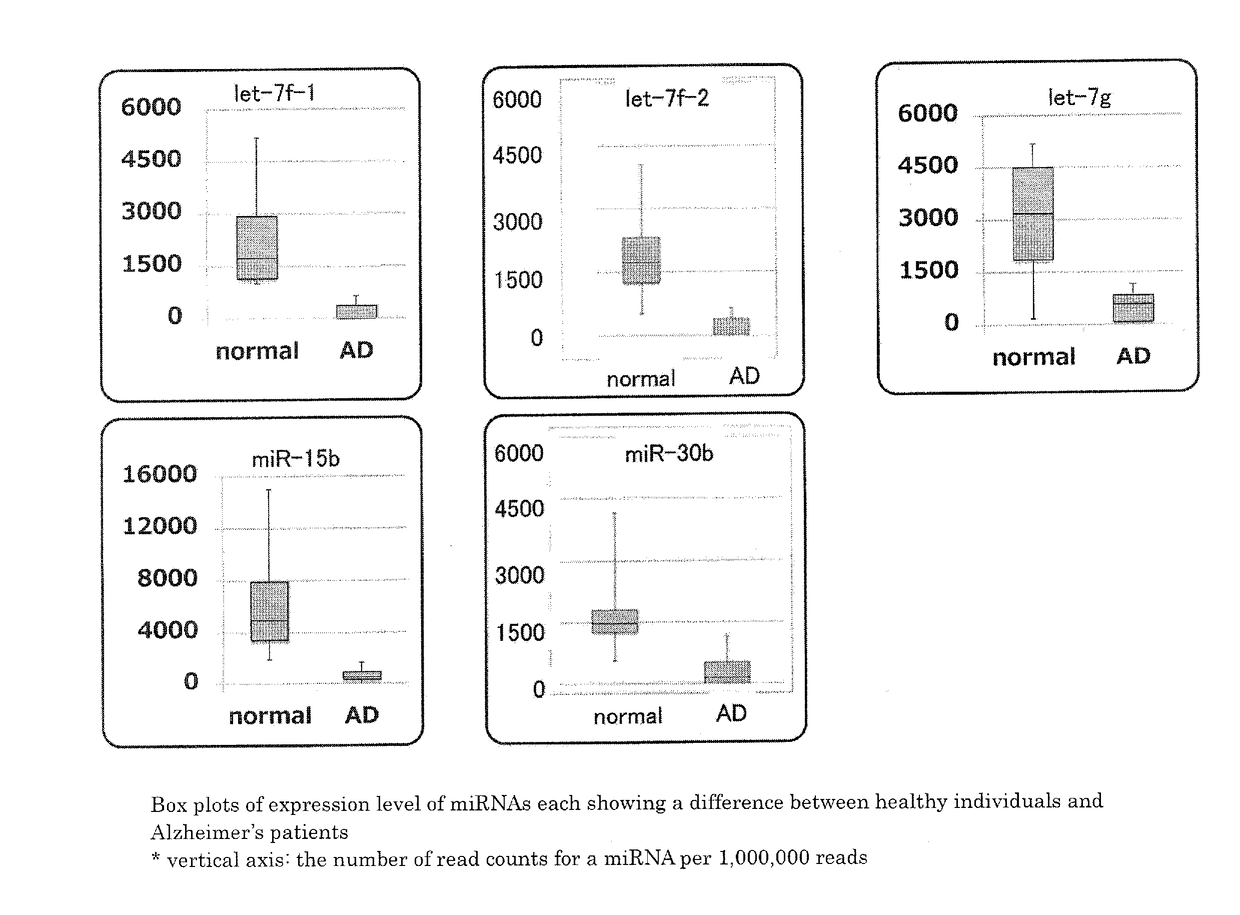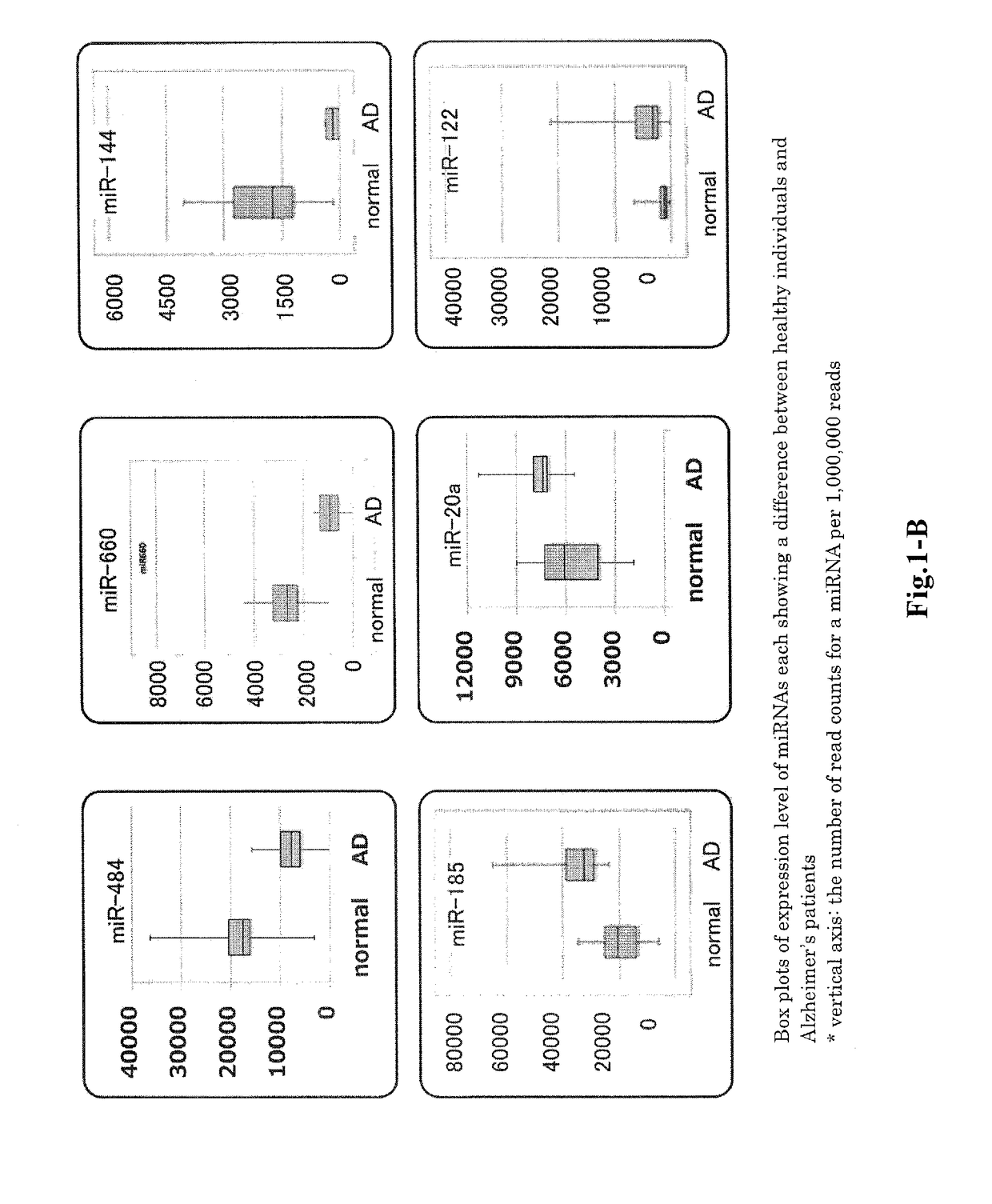Method for assisting detection of alzheimer's disease or mild cognitive impairment
a technology of cognitive impairment and detection aid, which is applied in the field of assisting the detection of can solve the problems of difficult detection of early alzheimer's disease or mild cognitive impairment, inability to completely block the progression of the disease, and inability to fully cure alzheimer's disease, etc., and achieves high accuracy.
- Summary
- Abstract
- Description
- Claims
- Application Information
AI Technical Summary
Benefits of technology
Problems solved by technology
Method used
Image
Examples
examples
Materials and Methods
Section 1. Clinical Samples
Subsection 1. Used Clinical Samples
[0058]Peripheral blood was collected based on the plan for a human genome and gene analysis research approved by the Ethics Committee of Hiroshima University for Human Genome and Gene Analysis Research. The details of the peripheral blood used for the analysis in this Example will be shown in the table below.
Subsection 2. Recovery of Plasma from Whole Blood and Preservation of the Plasma[0059]1) Five mL of whole blood collected in a VENOJECT II vacuum blood collection tube supplemented with EDTA-2K was transferred to a 15-mL tube and centrifuged at 3500 rpm for 10 minutes at room temperature.[0060]2) The centrifugation produces three layers separated in the following order from the top: plasma layer, white blood cell layer, and red blood cell layer. Among those layers, only the plasma layer was transferred to a new 2-mL tube.[0061]3) The collected plasma in the step 2 was centrifuged at 10000 rpm for ...
PUM
 Login to View More
Login to View More Abstract
Description
Claims
Application Information
 Login to View More
Login to View More - R&D
- Intellectual Property
- Life Sciences
- Materials
- Tech Scout
- Unparalleled Data Quality
- Higher Quality Content
- 60% Fewer Hallucinations
Browse by: Latest US Patents, China's latest patents, Technical Efficacy Thesaurus, Application Domain, Technology Topic, Popular Technical Reports.
© 2025 PatSnap. All rights reserved.Legal|Privacy policy|Modern Slavery Act Transparency Statement|Sitemap|About US| Contact US: help@patsnap.com



